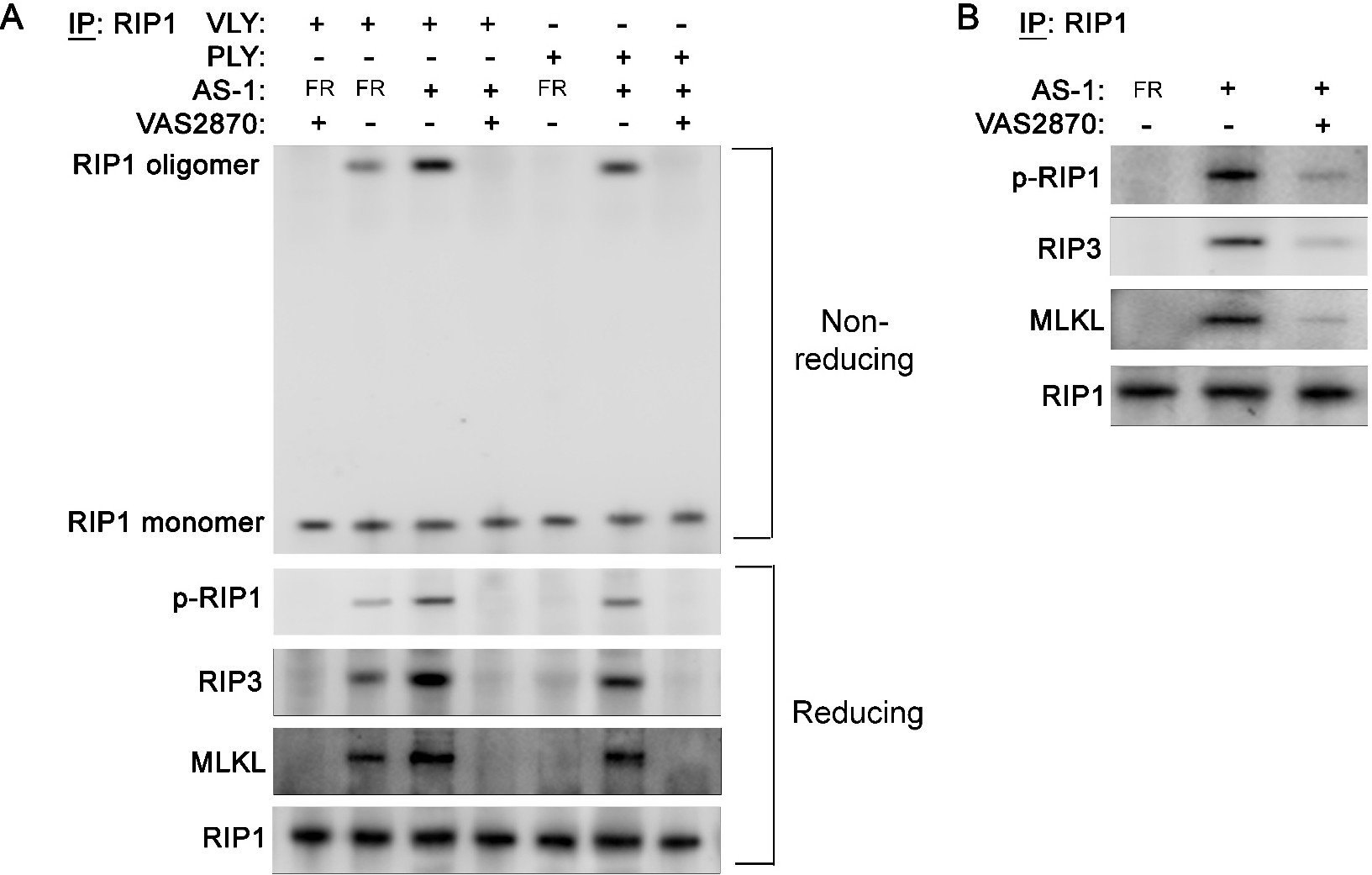Fig. 6. RBC storage leads to increased activation of necroptosis factors in an NADPH oxidase-dependent manner. Fresh human RBCs (FR) or those stored for 1 week in AS-1 were treated with the necroptosis-inducing toxin, VLY, or the non-necroptotic PLY followed by immunoprecipitation (IP) of RIP1. A.) VLY leads to oligomerization and phosphorylation of RIP1 in fresh RBCs and leads to necrosome formation as indicated by co-precipitation of RIP3 and MLKL. RIP1 oligomerization and phosphorylation as well as necrosome formation increase following RBC storage in response to either VLY or PLY. Increased RIP1 oligomerization, RIP1 phosphorylation, and necrosome formation were prevented by inhibition of NADPH oxidases with VAS2870 (VAS). B.) Storage of RBCs in AS-1 in the absence of toxin treatment leads to phosphorylation of RIP1 and necrosome formation which is prevented by VAS2870. Representative blots from 3 independent experiments are shown.
